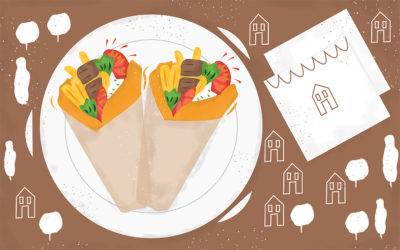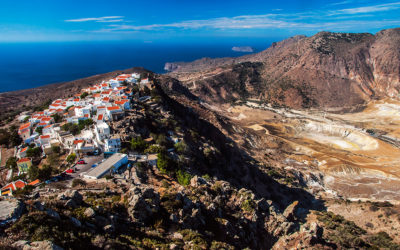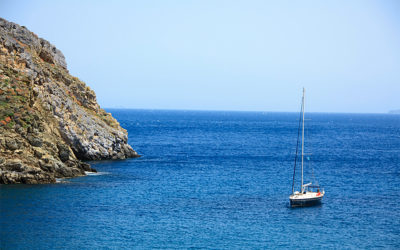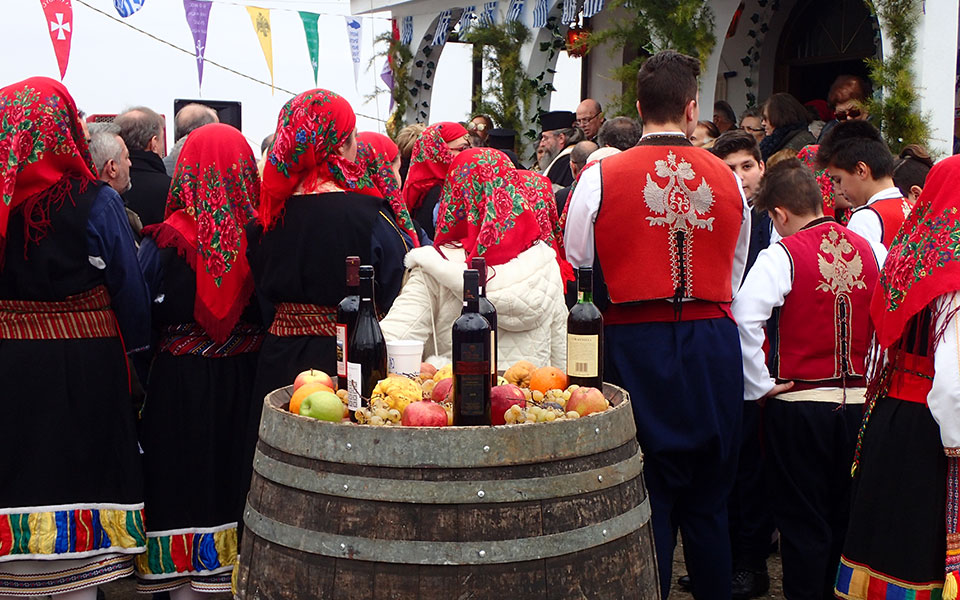
Life
Celebrating St Tryphon in Goumenissa: A Warming Feast in the Depths of Winter
Goumenissa, close to Greece’s northern border, is a wine town. On the feast day of St. Tryphon – the protector of the vine – the locals go all out for what is one of winter’s biggest celebrations.
Above the yard of St. Tryphon church (Aghios Tryphonas in Greek), the stars are shining bright in a sky still black as night. It’s a little after 6 am, and February 1st means the weather is profoundly wintery. The scent of Greek coffee brewing helps to rouse us, but to keep warm there are also shots of tsipouro, a local spirit distilled from grape pomace and flavored with aromatics.
Niki Tosiliani, of the Association of St. Tryphon and my guide for the day isn’t a bit drowsy though. This is the highlight of the association’s year, and she is full of enthusiasm and ready to get to work.
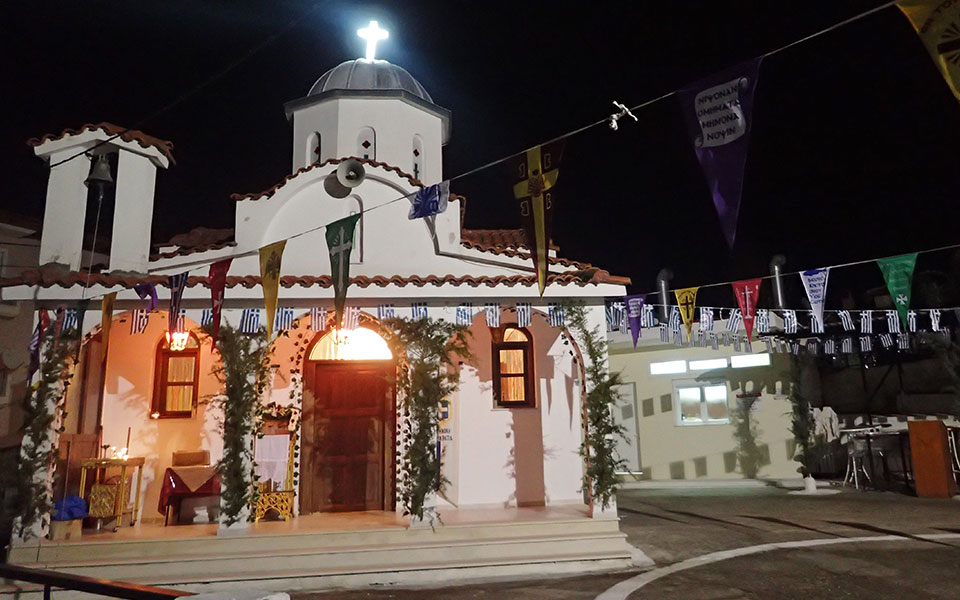
We go into the church’s kitchen so she can show me their new setup: a series of industrial-scale gas burners. “Until a couple of years ago, we cooked over open fires. You can’t imagine how much wood we needed. Then there was the smoke, the ash! Now, we just turn the gas on under them.” She’s gesturing to over half a dozen pots that are nearly waist-high. Soon, an entire bull will be divided among them.
“Except the head, of course.” Why not the head? “The head’s a delicacy! Everyone wants it, so we auction it off. The money goes towards paying for the next year’s bull.”
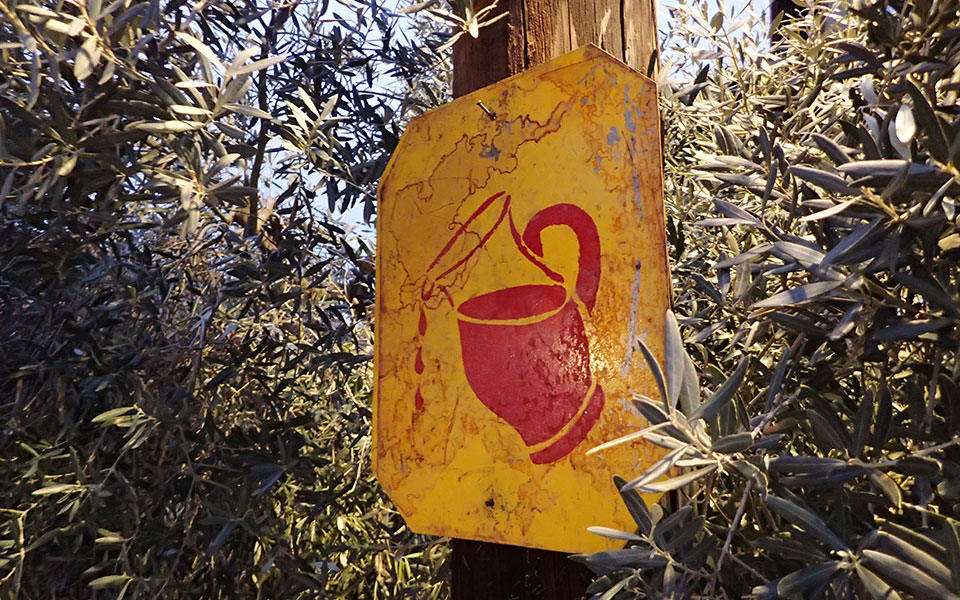
A whole bull has been traditional for the feast of St. Tryphon for as long as anyone can remember. The women fill the pots with the butchered meat, cover it with water, and add an astonishing amount of salt. That’s the secret. That, and patience. The meat needs a good 8 hours to reach tender perfection, which is why we are beginning in the dark of night. By 7:30, the meat is simmering, the sun, is up and the church begins to fill for the morning service on this most festive of days.
There are several hours between the end of the service and the start of celebrations, leaving plenty of time to explore. Goumenissa is a postcard-perfect village of stone buildings, plane trees, and an idyllic town square with a fountain. Old men gather there in the early light for a coffee and a chat, newspapers rattle, smoke billows from chimneys. The smell of flaky pies draws us into a bakery. We eat them from the bag, then choose a cafe right on the square and settle in to watch the morning unfold.
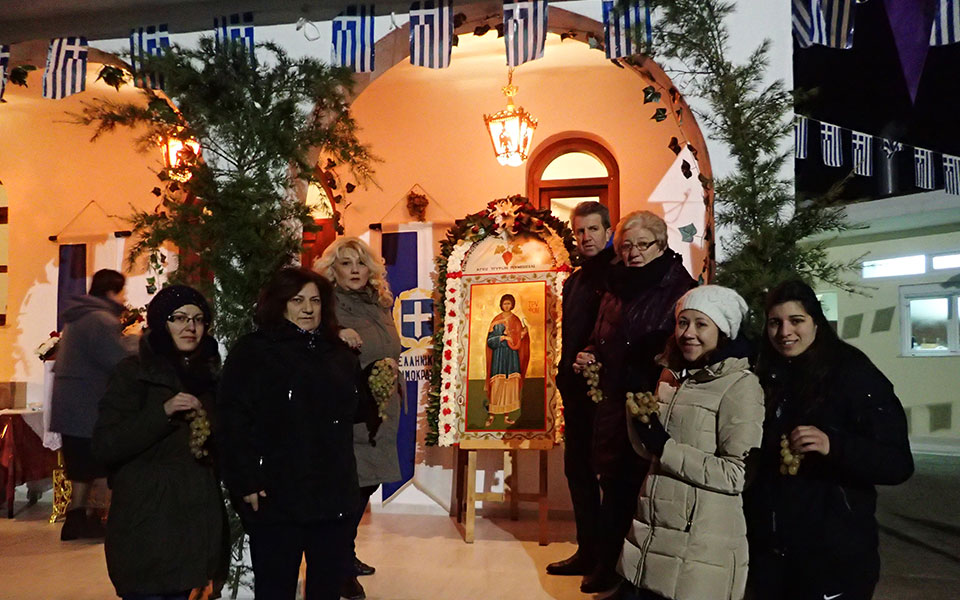
A completely different scene greets us as we walk back uphill to the church. Generators are humming. Greek church festivals attract a carnival element at their fringes: cotton candy (called “hair of the old woman” in Greek) vendors, cantinas selling hot dogs, and various stands with toys, souvenirs, and some religious articles. They’re just getting started out here.
Inside the churchyard, a raffle is set up (a carpet is the first prize). The mood heightens with the arrival of the dancers. The feast day of St. Tryphon is a big local celebration and dancers – not just from Goumenissa but from other regions too, all arrive in a colorful procession. There are many; it seems as if half the crowd is now dressed in traditional costume.
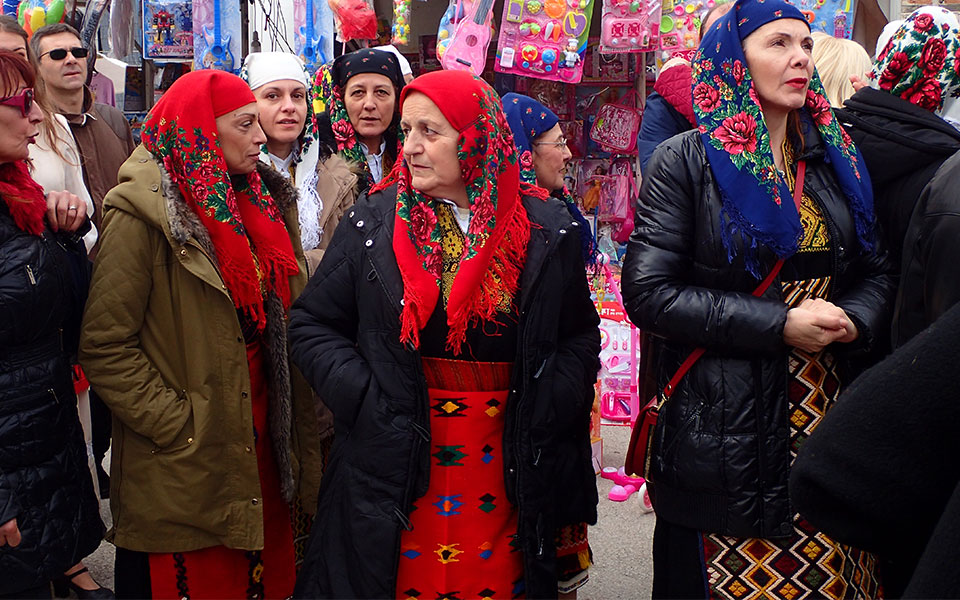
We now all gather in front of the church for the ceremony to begin. The priest performs a blessing of the waters – a brief but crucial moment in the day’s events. Later, this holy water will bless the region’s vines. Pruning begins on February 2nd, after these ceremonies in the vineyards.
Anticipation is high when the music finally starts, because Goumenissa is perhaps even better known for music than it is for wine. The “Halkina Goumenissas”- i.e. the brass bands of Goumenissa (there are several) are known all over. Loud, festive, and with a rousing heavy beat that feels a little tribal, the music moves the crowd at once.
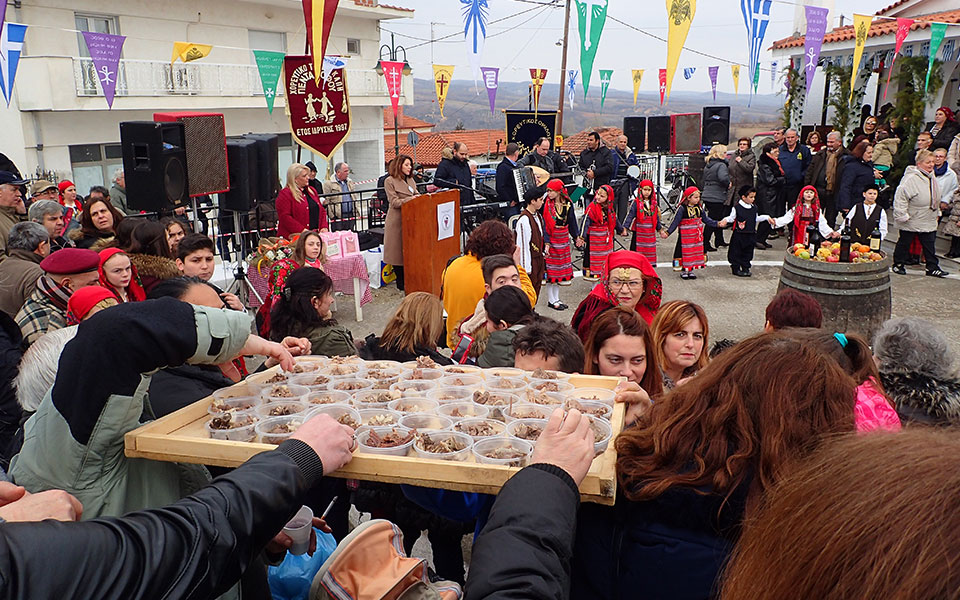
The dancers start in. In the official announcement, this part is described as the “traditional folkloric celebration, with dancers, brass band, and abundant ‘brusco’ wine.” And so it begins to flow. We sip dark wine, sway to a persuasive drum, and watch the traditional dances.
At long last, the meat arrives. Boys heft big wooden trays of meat on their shoulders, and we pass portions through the crowd. It falls apart into tender, salty strands in its rich broth. We have seconds, then thirds, taking ample sips of wine in between. The music picks up tempo.
It may be the very the heart of winter up here in Goumenissa, but under the chilly skies, today no one is feeling the cold.

